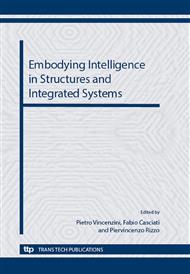p.75
p.85
p.95
p.105
p.115
p.122
p.132
p.138
p.144
High Precision Adaptive Space Structures
Abstract:
Integrated actuators and sensors promise significant improvement in structural performance if not being an essential condition for high functionality. But “integration” per se is no added value. For example, actuators have to be sufficiently small and local weakening of the material has to be avoided. So such concepts are specifically apt for actuating and controlling small displacements or low mass / low damping vibrating systems e.g. in opto-mechanical systems or space structures such as large reflectors, solar arrays or telescopes. For large reflectors with high dimensional stability requirements, post-manufacturing improvement of shape accuracy or a certain compensation of in-orbit disturbances is of interest. A further challenge comes into play when such structures have to be drastically morphed in their shapes in order to adapt to modified mission needs, which then calls for micro-actuators with relatively large displacement strokes. The discussion of these aspects will be based on results derived from simulations as well as from laboratory models.
Info:
Periodical:
Pages:
115-121
Citation:
Online since:
September 2012
Authors:
Price:
Сopyright:
© 2013 Trans Tech Publications Ltd. All Rights Reserved
Share:
Citation:


